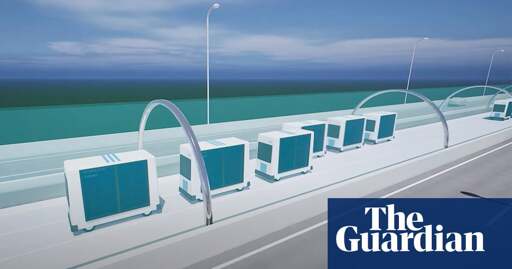That’s an interesting idea, but what is the advantage of not using rails?
My guess is it must be at capacity and there’s no space to build a parallel lane next to the tracks. This is conveyor belt so it is constantly moving in both directions with pellets being dropped back and forth. Of course rail industry has been trying to get to the “conveyor belt” idea for sometime but to have one that’s constantly moving both directions isn’t executable.
It says it can fit three cargo pods abreast, so I don’t think that’s the issue.
This is one of those things that reminds me that someone out there is probably doing something cool with that tube shipping system they built in NY forever ago and was forgotten for the most part. (It was like the bank tubes if people aren’t familiar). But traversed miles and miles of tubes! The internet one might say haha
Can’t figure out how to make chain signals work
I wonder if it’ll have turrets to fend off the Biters.
“The roads must roll!”
Someone in Japan is a Heinlein fan.
Keep 'em rolling!
Why use the term ‘conveyor belt’? No conveyor. No belts. Automated cargo containers.
Build a god damn train
First friggin’ paragraph…
Six decades after the bullet train first whisked passengers between Tokyo and Osaka, authorities in Japan are planning to do the same for cargo, with the construction of a “conveyor belt road”.
The bullet train is wholly irrelevant here. It does not transport cargo now, does it? Build a fucking freight train line. Every time some tech bro suggests a solution involving pods, a civil engineer has a stroke
Ah - you are correct - they don’t use those lines for freight (I thought they may). Still - Japan has some of the best train networks in the world.
I expect this idea to die. People act like because a thing was suggested or being looked into that it will automatically be done. “Solar Frickin’ Roadways” never went anywhere an this sounds unlikely to as well.
They won’t. Anything on a bullet train line needs to go at a speed of a bullet train. If it goes slower, it slows down the bullet trains on the line.
Cargo does not require bullet train speeds, only passengers do. The added expense does not translate to a better service. Cargo is not time sensitive like people are, so usually freight trains go under 100 km/h. This requires a whole lot less infrastructure and a whole cheaper locomotives and wagon compositions, as locomotives and wagons that go faster are more expensive and require more maintenance.
They won’t.
They won’t what?
I like how you think you know better than Japan after skimming a simple article lol
I don’t know why OP is getting downvoted. This comment is correct. The economies of freight on rails are predicated on scale. The bigger the train, the better. It only requires a few locomotives that have the biggest maintenance costs. Cars are unpowered and require less maintenance. A train can transport thousands of tons. An average mid-size train in Europe would carry about 2000 tonnes of freight.
To add an electric motor per ton of cargo transported (as detailed in the article) adds an excessive amount of overhead costs to the cargo transported, in upfront costs, maintenance and environmental impact, making it less competitive than a regular freight line. With the space of the same infrastructure and probably the same investment, you could instead run a freight line, especially considering the distance between Osaka and Tokyo. Over time, the freight line wins out over the individual one ton self-propelled cargo wagons. Remember, every propulsion system breaks down and requires new parts and fixing. The more of them there are, the more complex your transportation system becomes, thus more expensive. An equivalent to a mid sized freight train in pods would require about 2000 electric motors, as opposed to one or two dedicated electrical locomotives.
They should instead improve the trains to be able to run mostly automated. This requires track sensors and advanced signaling.




